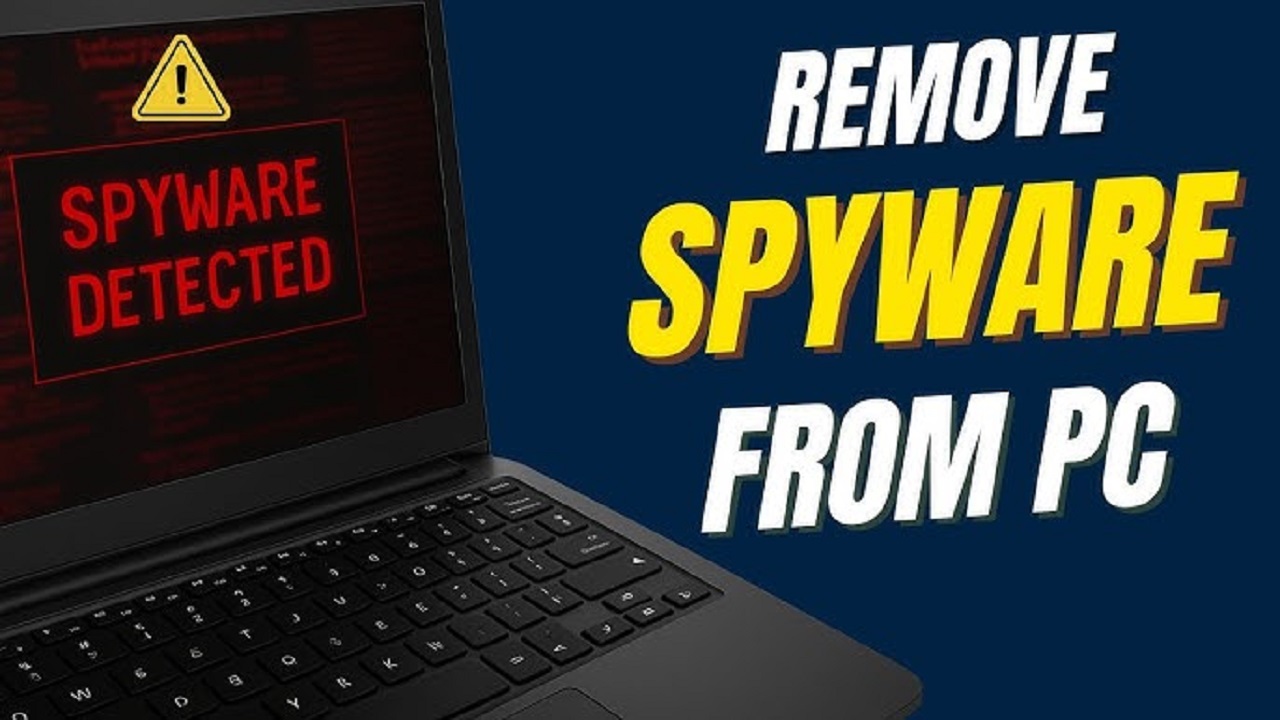Spyware is like that uninvited guest who sneaks into your home, watches your every move, and steals your private information. It’s sneaky, intrusive, and can slow down your PC while compromising your personal data. I’ve had my fair share of battles with sluggish computers and suspicious pop-ups, so I know how frustrating it can be. The good news? You don’t need to be a tech wizard to detect and remove spyware from your PC. In this article, I’ll walk you through five straightforward steps to kick spyware to the curb and keep your computer running smoothly.
What Is Spyware, and Why Should You Care?
Spyware is malicious software that secretly monitors your online activities, collects sensitive information like passwords or credit card details, and sometimes even takes control of your system. It can sneak in through shady downloads, email attachments, or unsecured websites. The result? A sluggish PC, annoying ads, and, worst of all, a potential breach of your privacy.
Taking action is crucial because spyware doesn’t just annoy you—it can lead to identity theft or financial loss. By following these five steps, you’ll not only remove spyware but also learn how to protect your PC moving forward. Let’s dive in!
Step 1: Disconnect from the Internet
The first thing I do when I suspect spyware is to cut off its lifeline. Spyware often communicates with its creators by sending your data over the internet. Disconnecting your PC stops it from leaking information while you clean things up.
-
How to do it: Unplug your Ethernet cable or turn off your Wi-Fi. On Windows, click the network icon in the taskbar and select “Disconnect.” On a Mac, go to the Wi-Fi menu and choose “Turn Wi-Fi Off.”
-
Why it works: Without an internet connection, spyware can’t transmit your data or download additional malicious files.
Pro tip: If you’re unsure whether your PC is infected, disconnecting is a safe first move while you investigate.
Step 2: Boot Your PC in Safe Mode
Safe Mode is like putting your PC in a protective bubble. It loads only the essential files and drivers, making it harder for spyware to hide or run in the background. I’ve found this step to be a game-changer when dealing with stubborn malware.
-
On Windows:
-
Restart your PC.
-
Press F8 or Shift + F8 (depending on your system) during startup to access the boot menu.
-
Select “Safe Mode with Networking” (useful if you need to download tools).
-
-
On Mac:
-
Restart your Mac.
-
Hold down the Shift key until the Apple logo appears.
-
Release the key when you see the login screen—your Mac is now in Safe Mode.
-
Safe Mode gives you a clean slate to run scans and remove threats without interference. It’s like working in a sterile lab to eliminate germs.
Step 3: Run a Full System Scan with Anti-Spyware Software
Now it’s time to bring in the big guns—anti-spyware software. I’ve relied on trusted tools like Malwarebytes, Spybot Search & Destroy, or Windows Defender (built into Windows 10 and 11) to sniff out spyware. If you don’t already have one installed, you may need to download it (reconnect to the internet briefly if needed, then disconnect again).
-
Steps to scan:
-
Update your anti-spyware software to ensure it has the latest threat definitions.
-
Run a full system scan, not a quick one, to check every nook and cranny of your PC.
-
Quarantine or delete any threats the software detects.
-
-
Free tools to try:
-
Malwarebytes: Great for detecting and removing spyware.
-
AdwCleaner: Lightweight and perfect for adware and browser hijackers.
-
Windows Defender: Free and reliable for basic protection.
-
One time, Malwarebytes found a pesky toolbar that was redirecting my browser searches. It was a relief to see it gone after a quick scan!
Step 4: Remove Suspicious Programs and Browser Extensions
Spyware often disguises itself as legitimate software or sneaks into your browser as an extension. I once installed a “free” photo editor only to realize it was tracking my browsing habits. Checking your installed programs and extensions is a must.
-
Uninstall suspicious programs:
-
Windows: Go to Control Panel > Programs > Uninstall a Program. Look for anything unfamiliar or recently installed, especially around the time your PC started acting up.
-
Mac: Open the Applications folder and drag suspicious apps to the Trash.
-
-
Remove browser extensions:
-
In Chrome, go to Menu > More Tools > Extensions.
-
In Firefox, navigate to Menu > Add-ons and Themes.
-
In Safari, go to Preferences > Extensions.
-
Disable or remove any extensions you don’t recognize or trust.
-
If you’re unsure about a program or extension, a quick Google search can confirm whether it’s safe. Better safe than sorry!
Step 5: Update Your System and Reset Passwords
Once you’ve removed the spyware, it’s time to lock the doors so it can’t sneak back in. Updating your operating system and software patches vulnerabilities that spyware exploits. I also recommend resetting passwords for your critical accounts, just in case your data was compromised.
-
Update your system:
-
Windows: Go to Settings > Update & Security > Windows Update and check for updates.
-
Mac: Click Apple Menu > System Preferences > Software Update.
-
-
Reset passwords:
-
Change passwords for your email, banking, and social media accounts.
-
Use strong, unique passwords (a password manager like LastPass can help).
-
Enable two-factor authentication (2FA) for extra security.
-
Bonus Tips to Prevent Spyware in the Future

I’ve learned the hard way that prevention is better than a cure. Here are some habits to keep spyware at bay:
-
Avoid suspicious downloads: Stick to trusted sources like the Microsoft Store or official websites. That “free” game from a shady site might cost you more than you think.
-
Be cautious with email attachments: Don’t open attachments from unknown senders. Even familiar senders can be compromised, so double-check.
-
Use a reputable antivirus: Invest in a good antivirus suite for real-time protection. Free options like Avast or AVG work well for budget-conscious users.
-
Browse safely: Avoid clicking on pop-up ads or visiting unsecured websites (look for “https” in the URL).
-
Regularly back up your data: If spyware strikes again, a backup ensures you won’t lose important files.
Why Acting Fast Matters
Spyware isn’t just a nuisance—it’s a ticking time bomb. The longer it stays on your PC, the more damage it can do. From stealing your login credentials to logging your keystrokes, the risks are real. I remember the panic of realizing my browser was redirecting to weird sites, but following these steps saved the day. By acting quickly and methodically, you can reclaim control of your PC and your privacy.
Final Thoughts
Dealing with spyware can feel overwhelming, but it’s manageable with the right approach. Disconnecting from the internet, booting in Safe Mode, scanning with anti-spyware software, removing suspicious programs, and updating your system are all steps anyone can follow. I’ve been there, frantically Googling solutions while my PC lagged, and I promise these steps work.

